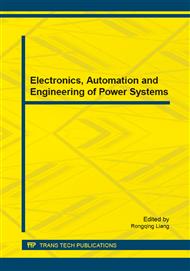p.791
p.796
p.805
p.811
p.816
p.822
p.827
p.834
p.841
A Ultra -Super Efficiency Induction Motor Based on the Finite Element Analysis
Abstract:
In order to increase the cost and material conditions as little as possible for improving the efficiency of the motor, and reduce the losses of the motor. This paper have YE3-132S-6X3 super-efficient motor loss analysis first. According to the characteristics of its loss analysis, this paper change the motor slot coordination, and through the finite element analysis, further has carried on the design of slot type and winding. Finally, in order to further reduce iron loss, this paper uses the new type of silicon steel, and then by comparing with the finite element analysis and experimental tests found YE3-132S-6X3 motor efficiency have achieved the purpose of the ultra-super efficient, and other performance parameters can also meet the requirements.
Info:
Periodical:
Pages:
816-821
Citation:
Online since:
February 2015
Authors:
Price:
Сopyright:
© 2015 Trans Tech Publications Ltd. All Rights Reserved
Share:
Citation:


